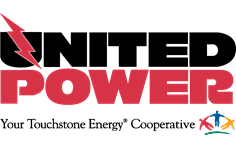/sites/default/files/styles/news_card_553x430_/public/news/CEO_Message.jpg?h=45932144&itok=pNegmSzP
Date: 4/29/2022
United Power filed a non-conditional Notice of Intent to Withdraw from our power supplier in compliance with a recent Federal Energy Regulatory Commission ruling. This changes our previously announced Tri-State exit date of Jan. 1, 2024 to May 1, 2024.
 Charles Darwin put things into perspective when he noted, “it is not the strongest or the most intelligent who will survive but those who can best manage change.”
Charles Darwin put things into perspective when he noted, “it is not the strongest or the most intelligent who will survive but those who can best manage change.”
The electric industry is the perfect example of creating and managing change. It brought light, heat and motive power to communities, replacing oil lamps, wood stoves and steam trollies. Electricity freed us from drudgery, allowed education to expand and made previously uninhabitable places livable. In the generations since Thomas Edison, this amazing industry has been continuously reinvented, and today we are at yet another juncture.
As United Power members and residents of communities we serve, you are taking much of your electric consumption into your own hands. Smart thermostats are taking over, solar installations continue to increase and more than 4,000 electric vehicles now ply our roads. Even refrigerators have smart technology built in. The network of intelligent electricity is expanding, and we are looking at new ways to ensure the continued strength of viability of our networks.
We continue to improve the reliability and resilience of our system, thanks in large part to the support of our Board of Directors who have allowed the staff at United Power to make investments on your behalf. From vegetation management to covered cable, we continue to improve our system.
The coming move to new power suppliers is yet another step in the ongoing change and evolution for United Power. We are seeking to provide lower cost and lower carbon power, keep dollars in our communities and embrace the changes we are seeing across the electric enterprise. At the heart of this change is a more diverse generation portfolio, taking advantage of local power supplies and managing the system in a different fashion.
I am very pleased that a number of our members have reached out with specific questions – and I take pride in personally answering each and every one. The majority of questions about our decision were affirming and positive. Others expressed specific concerns about rates during the 24-month transition period and some had worries or cautions regarding reliability, pointing to the situation in Texas this past February as well as ongoing problems in California. United Power has no planned rate increases forthcoming, and the unfortunate events in Texas highlighted the clear need for winterization of power plants and the state’s lack of interconnectivity to other states and markets. And in California, public policy has been allowed to push ahead of physics.
While members can find detailed FAQs on our decision on the Power Supply page, I can assure you the change we are making focuses on economics, reliability, environmental responsibility and critical operating decisions. Constraints on low- or no-carbon generation, for example, flies in the face of our members’ own actions, as well as the state’s mandates. Patiently waiting for power plant closures stretching decades neither yields savings for our members nor represents the change we are seeing in the electric industry.
At United Power, we are working to manage the change and continue being responsive to your needs every day. Whether it is providing information on solar energy, offering leases for EV chargers or working with developers on new energy efficient neighborhoods, we are focused on your needs today and into the future.
The staff at United Power is committed to supporting our rapidly growing membership. Please feel free to reach out to me with your questions, comments and concerns as we continue powering lives, powering change, powering the future – the Cooperative way.


 Charles Darwin put things into perspective when he noted, “it is not the strongest or the most intelligent who will survive but those who can best manage change.”
Charles Darwin put things into perspective when he noted, “it is not the strongest or the most intelligent who will survive but those who can best manage change.”